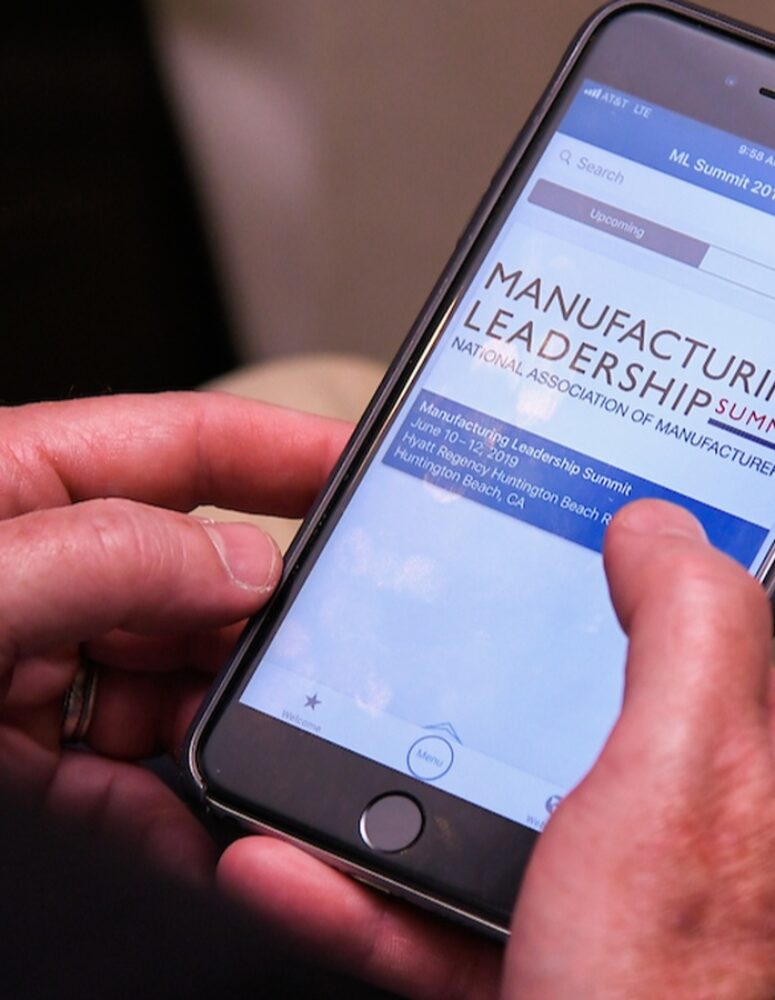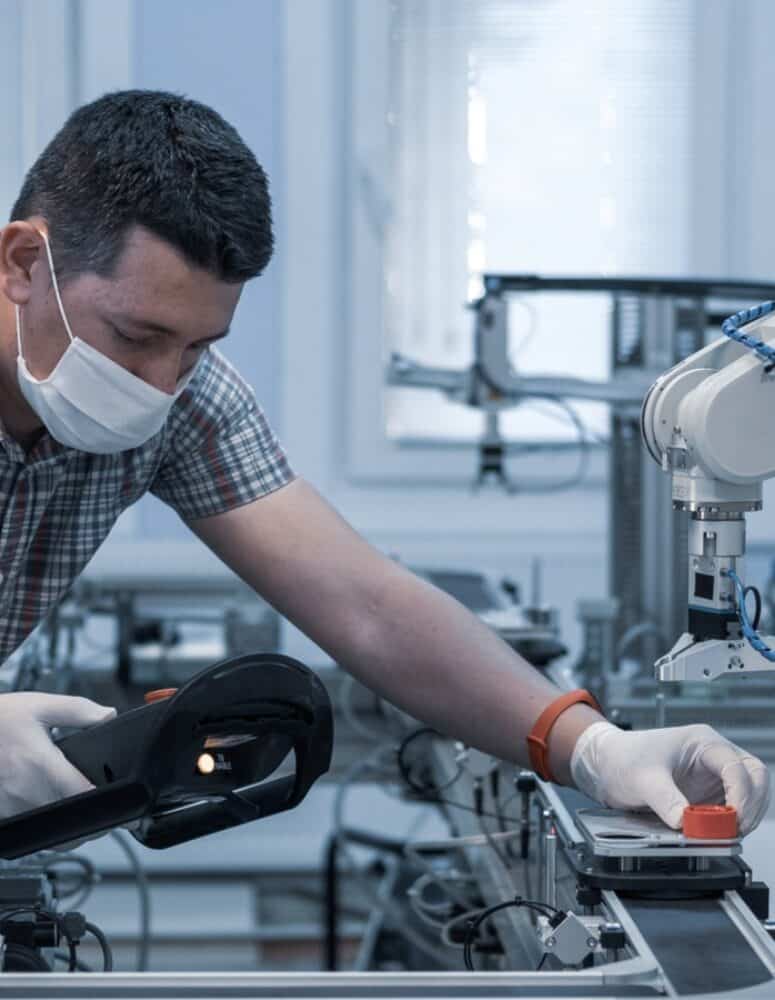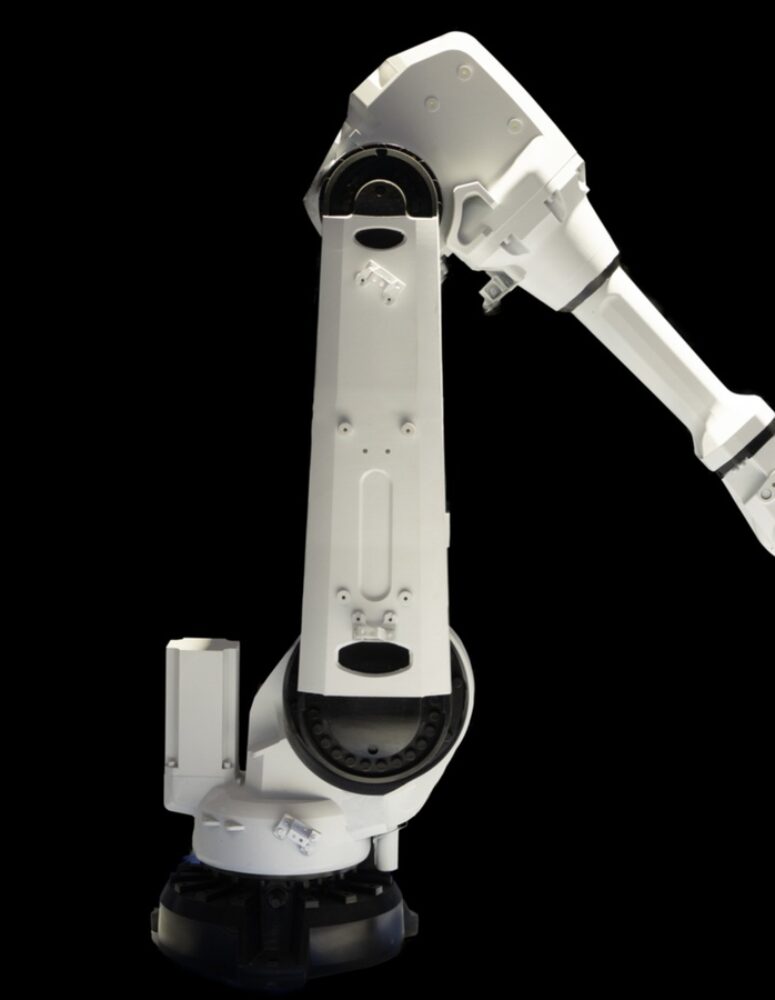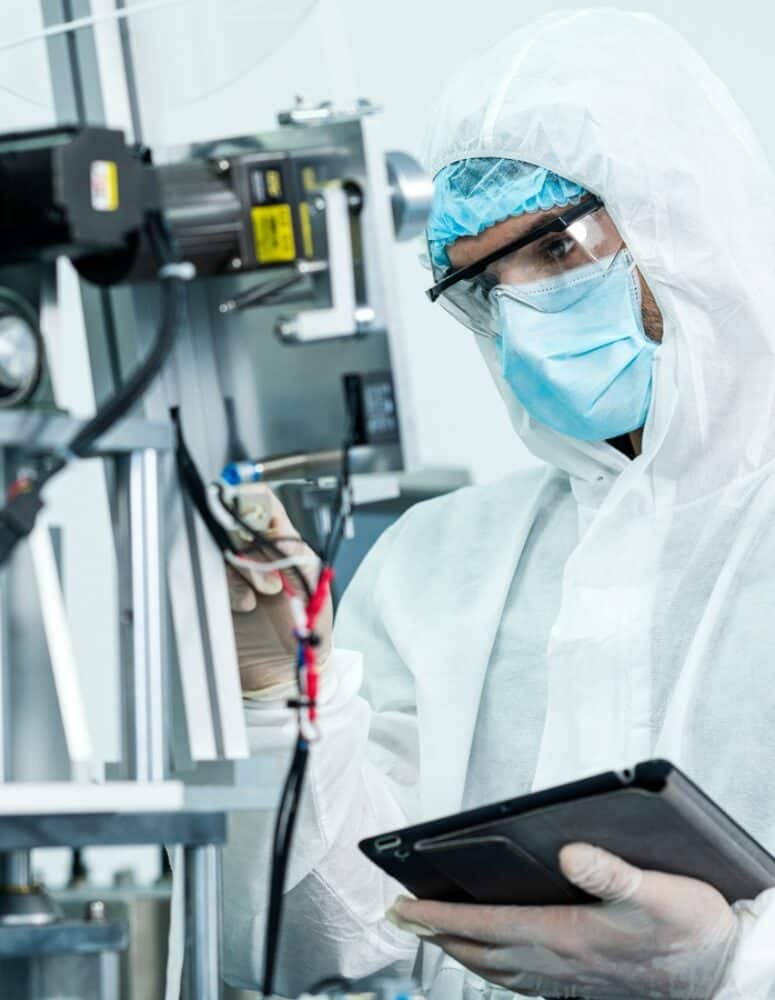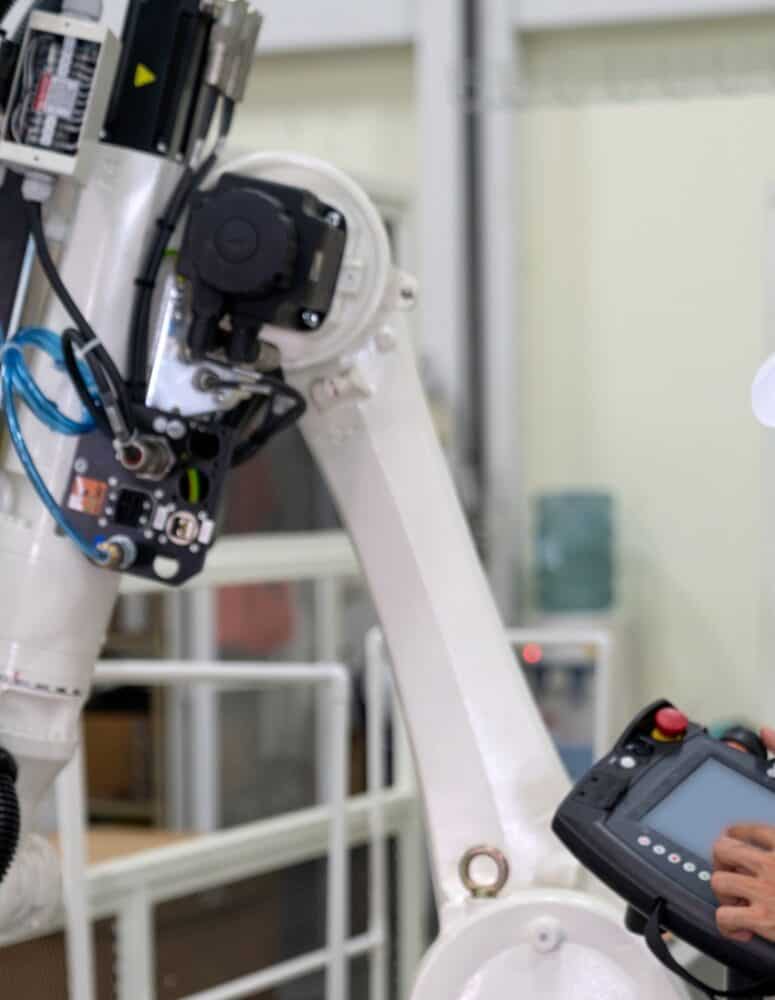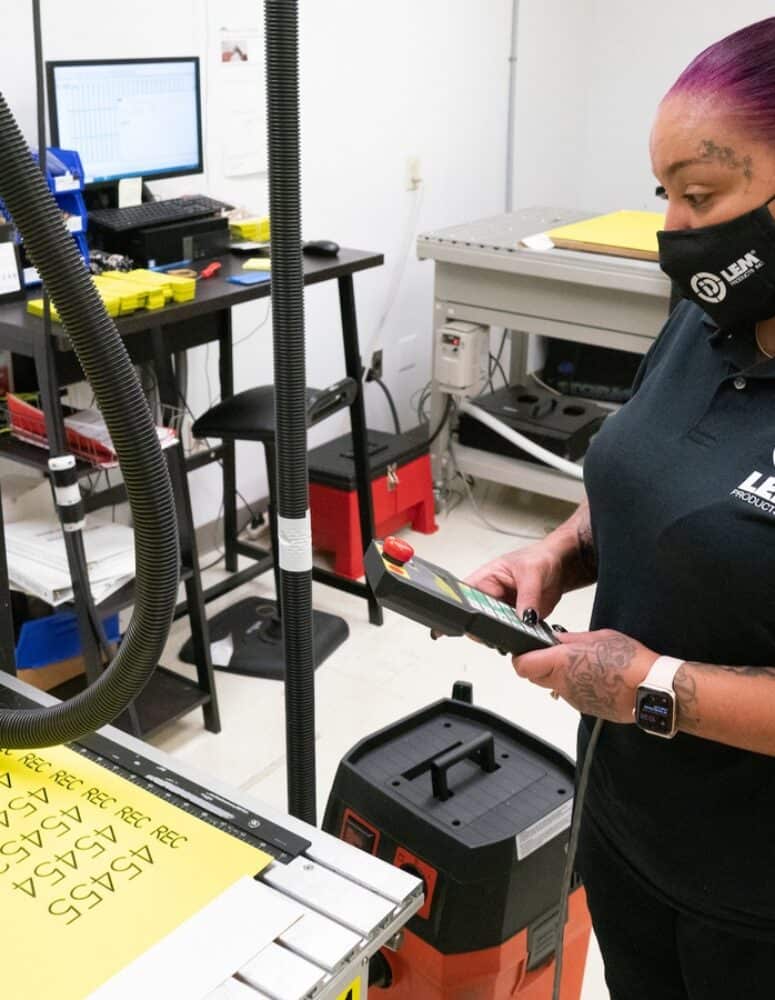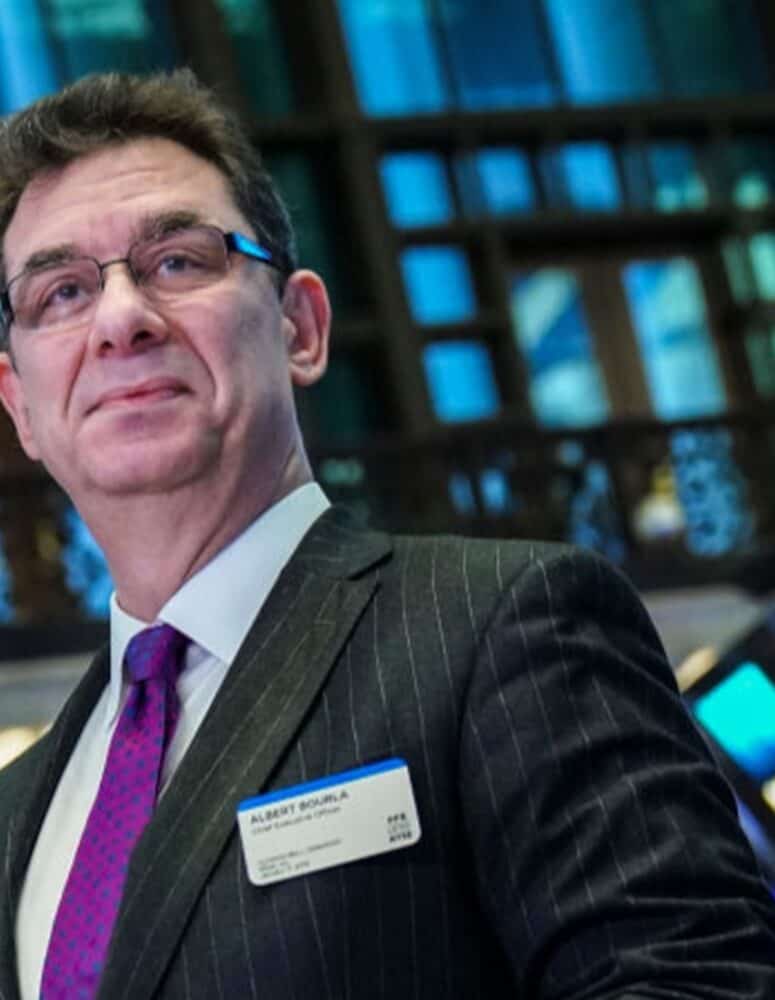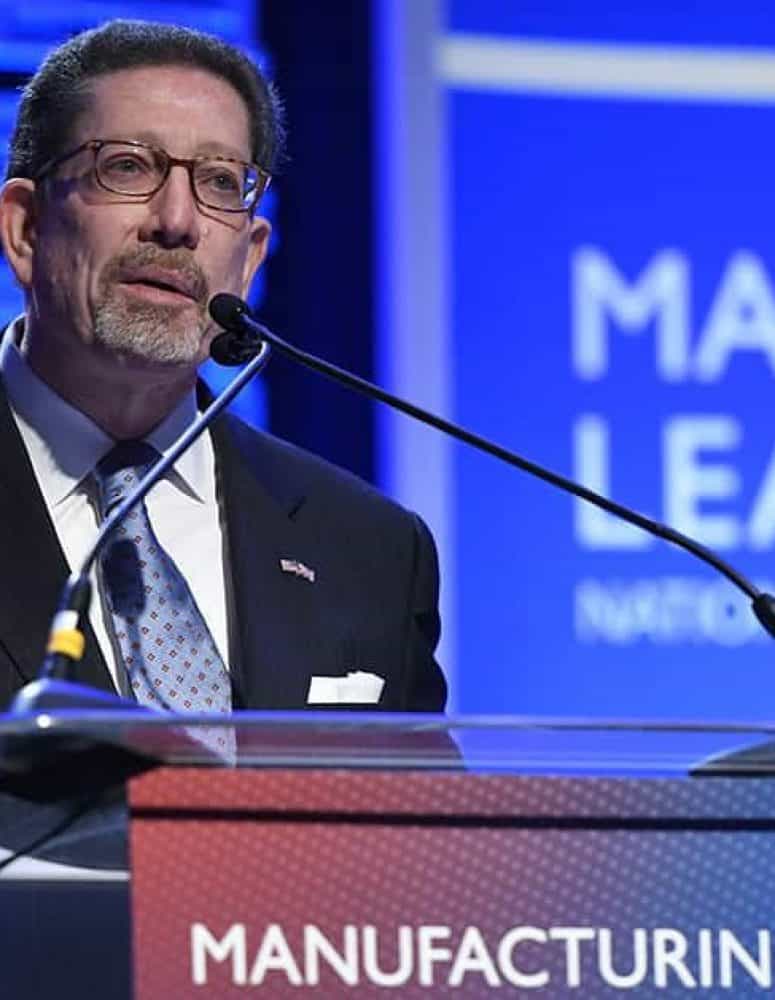Sustainability Is a Top Manufacturer Priority, Survey Shows
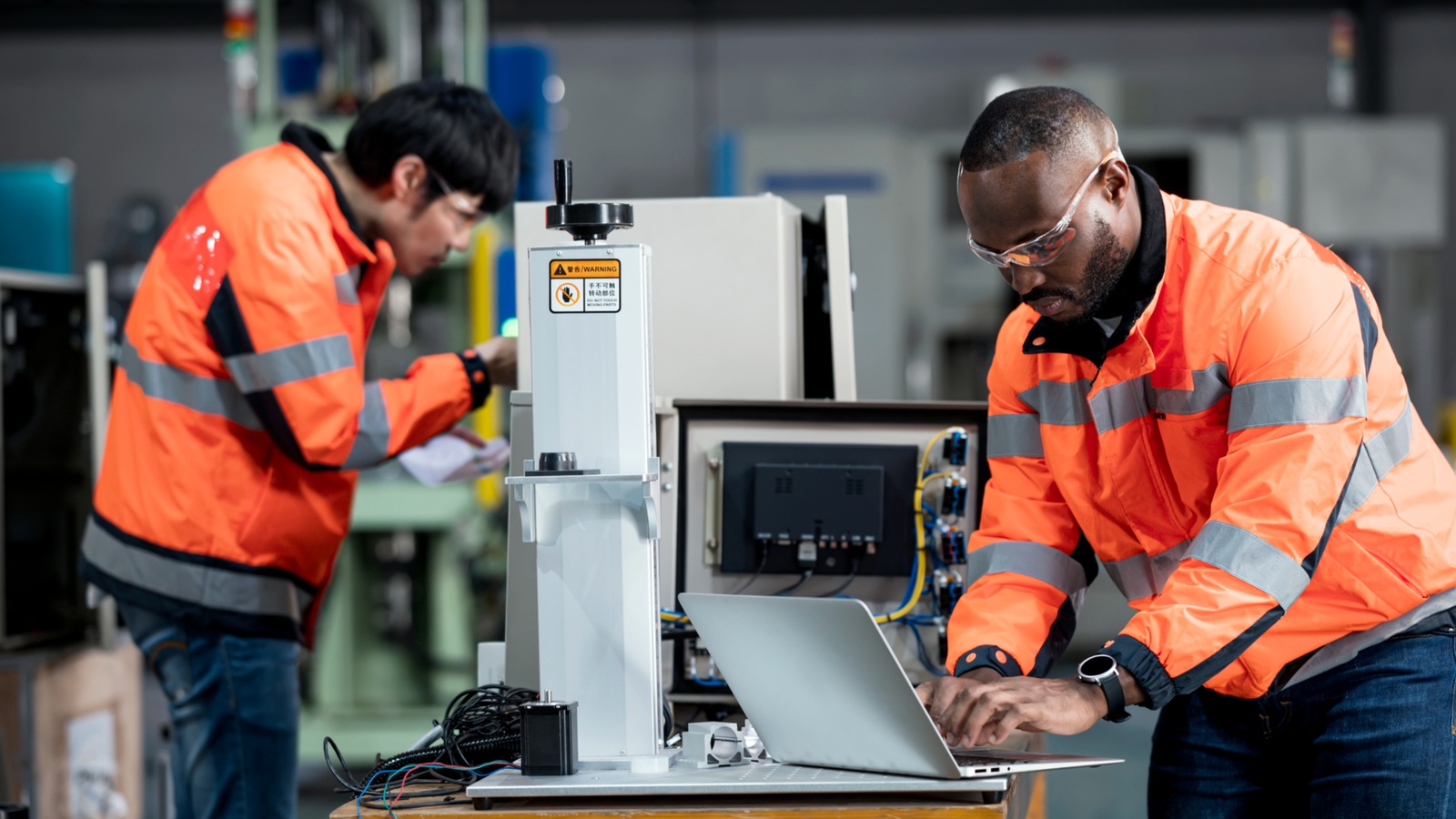
Manufacturers are pursuing sustainability like never before.
That’s according to recent polling conducted by the Manufacturing Leadership Council, the NAM’s digital transformation division. The annual Sustainability and the Circular Economy research survey seeks to determine the progress made in sustainable manufacturing.
Competitiveness: There has been a surge in the number of manufacturing executives who view sustainability as critical to the future of their businesses.
- 58% of respondents in 2022 believe sustainability is essential to future competitiveness compared to 38% in 2021.
- 68% of executives say they are implementing extensive, corporate-wide sustainability strategies. That’s up from just 39% in 2019.
What’s driving change: The motivations go beyond regulatory compliance and cost savings.
- 78% say sustainability is about better alignment with corporate values.
- 68% believe in creating a cleaner, healthier environment.
- 66% seek to improve company reputation with customers and investors.
Top corporate goals: More than half of survey respondents reported having specific sustainability goals and metrics across almost all key functions in the company.
- Goals were most apparent in manufacturing and production (79%), supply chain (69%) and product design and development (67%).
- Additional goals were cited in transportation and logistics (56%) and partner compliance (51%).
Energy efficiency is No. 1: The primary sustainability focus of manufacturers, according to survey results, is energy efficiency and reduction, combined with the transition to renewable energy sources. These efforts are linked intrinsically to meeting net-zero emissions goals.
- 45% of respondents report having announced formal net-zero goals.
- 30% aim to hit net zero by 2030.
Digital tech, employee training play a role: Also on the rise is the number of companies that recognize the importance of digital solutions in their sustainability efforts.
- These tools are being used to manage and monitor materials and energy consumption, optimize operations to improve efficiency and report sustainability progress.
- Respondents also say meeting sustainability targets must include engaging employees through education and training, as well as greening their supply chain.
The last word: An overwhelming 90% of all respondents agree that manufacturing has a special responsibility to society to become more sustainable and accelerate the transition to a future circular industrial economy.
Interested in putting some renewable energy solutions into action, including solar power, battery storage and LED lighting? Programs from utility companies and other entities enable efficiency upgrades with little or no upfront capital. Connect with NAM Energy to explore your options!
Manufacturing in 2030 Megatrend: Ride the Power Curve
Get the Latest News
Get involved
Digital manufacturing is built on just five “cornerstones”—and the work done in those areas in the next decade and beyond will largely determine the success or failure of key aspects of manufacturing’s technological future, according to the Manufacturing Leadership Council, the NAM’s digital transformation arm.
The MLC says that developments in electronics, computer systems, communications technologies, software and cyber infrastructure will have a direct impact on advancements made in human-machine interaction, automation and robotics, and autonomous operation. We break these down below:
Electronics: Intel predicts that by 2030 it will be able to incorporate 1 trillion transistors on a single semiconductor chip.
- Manufacturers will need that kind of power to enable computer systems and software to process much larger data volumes as they connect more plant equipment and people within their business ecosystems.
Computer systems: Manufacturers should expect a changing computer landscape as biological, physical and digital systems converge to offer more options.
- Quantum computing and nanocomputing offer potentially greater computational ability, which will allow manufacturers to process more data faster.
- Meanwhile, traditional computers will become lighter, thinner and more flexible. Different user interfaces, such as voice recognition, will progress.
Communications technologies: The years ahead will see manufacturers adopt 5G-based networks, which offer higher bandwidth and lower latency than prior technology.
- Communications technology suppliers are already working on 6G networks, expected to become commercially available in 2030.
Software: Next-generation software applications, in addition to web and mobile capabilities, will support voice, wearables, touch and AR/VR to a greater extent than ever before.
- These applications will be driven increasingly by artificial intelligence.
Cyber infrastructure: The cyber infrastructure that has been in development for the past two decades has allowed for separation between data and physical computing sources (i.e., cloud computing.)
- Looking ahead, an infrastructure that brings together data from all sources with business and technology tools will facilitate innovation, R&D, operating models and business growth.
Manufacturing in 2030 Project: Ride the Power Curve is just one of the megatrends identified by the Manufacturing in 2030 Project, a future-focused initiative of the MLC. For details on more megatrends, industry trends and key themes for Manufacturing in 2030, download the MLC’s new white paper “The Next Phase of Digital Evolution.”
Manufacturers Keep Pace with Technology Deployment
Get the Latest News
Get involved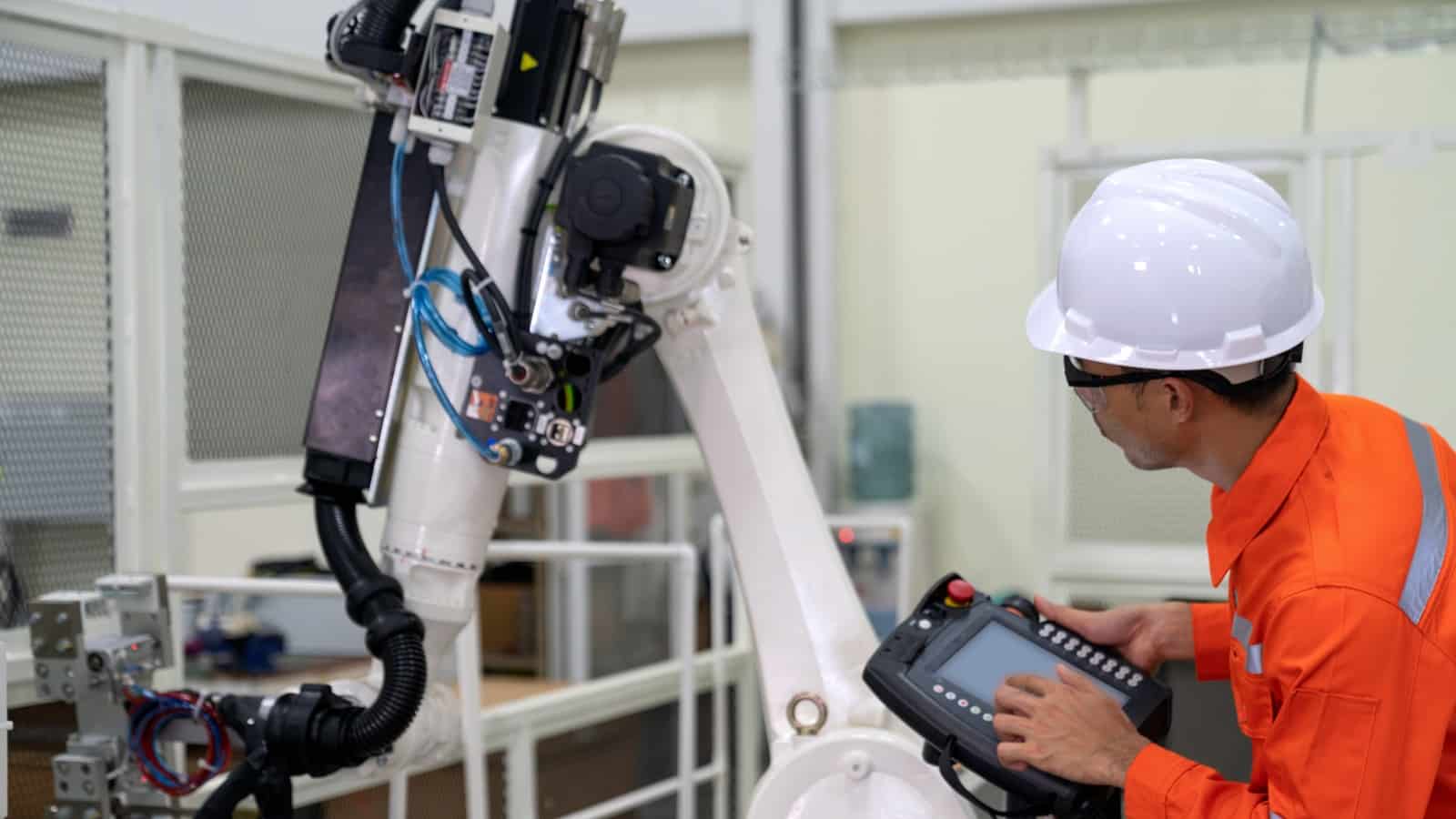
Manufacturers are staying on top of the tech game.
That was among the chief findings of a new polling conducted by the Manufacturing Leadership Council, the NAM’s digital transformation division. The annual Transformative Technologies in Manufacturing research survey aims to reveal data on current realities and expectations for manufacturing in the near future and in the years to come.
Rate of adoption: The most surprising data point was that 89% of respondents said they expect their company’s rate of adoption of disruptive technologies to increase over the next two years. That figure is up from 51% just one year ago.
Why disruptive technology? Reducing costs and improving operational efficiency were the most-cited reasons for investing in digital tech, with 83% of respondents identifying these as important motivations.
- Improving operational visibility and responsiveness came in second, at 61%.
- Other reasons include increasing digitization (40%), creating a competitive advantage (36%) and improving quality (30%).
Top near-future trends: Digital-twin modeling and simulation software, augmented and virtual reality, high-performance computing and further investments in supply chain management software will lead the next wave of investments during the coming year or two.
Not of interest: The survey found that quantum computing and blockchain technology are currently of the least interest to manufacturers.
The role of AI and ML: Artificial intelligence and machine learning usage continues to grow among manufacturers.
- Nearly 50% of respondents indicated that their companies have implemented AI, either on a single-project basis (40%) or in all factories (9%).
- About 75% said they are applying AI and ML to reduce costs and improve productivity and processes.
- Approximately 60% indicated they had used AI and ML for preventative/predictive maintenance or quality improvement.
Misunderstood metaverse: A new topic covered by this year’s survey, the manufacturing metaverse, was perhaps the least understood by respondents.
- About 38% said they were still trying to understand the technology and concept, 20% said they have no plans to adopt a manufacturing metaverse approach and 15% said they didn’t know how to respond to the question.
The last word: “Manufacturers are finding more use cases and business benefits for increasing their use of digital technology, and the pace of adoption is accelerating,” said MLC Co-Founder and Vice President and Executive Director David R. Brousell.
- “The research confirms that manufacturing is headed for an agile, connected and collaborative future driven by technology and fueled by innovation.”
A Winning Formula at AB InBev
Get the Latest News
Get involved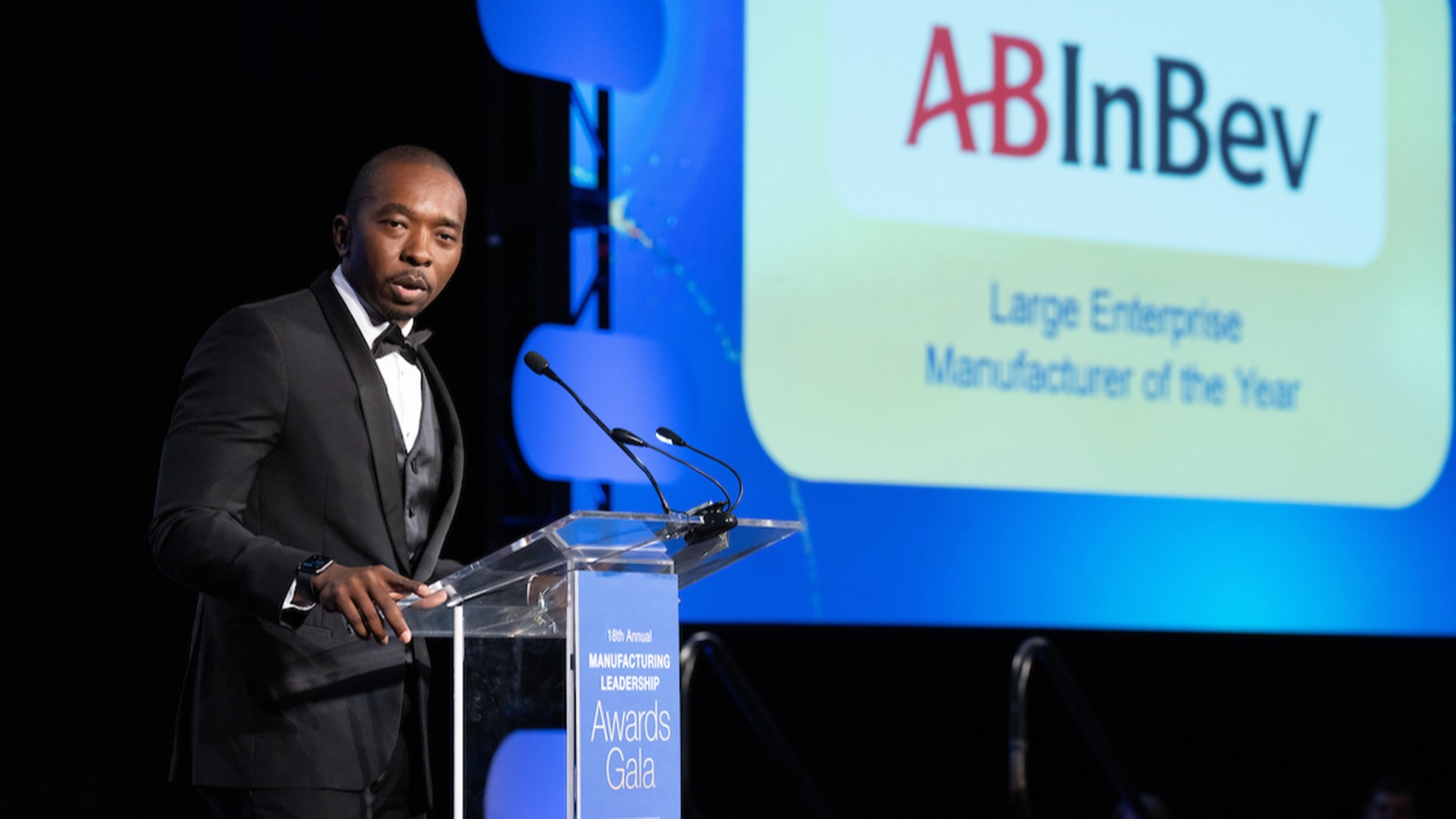
Anheuser-Busch InBev recently got to raise a toast to its team members—not just once, but four times.
After being named a 2022 Manufacturing Leadership Awards Gala winner in three categories—AI and Machine Learning, Digital Network Connectivity and Operational Excellence—the company took home the ultimate prize: the MLC’s Large Enterprise Manufacturer of the Year. (The MLC is the NAM’s digital transformation partner.)
Recipe for success: What’s brewing in AB InBev’s recipe for success? According to Global Vice President of Engineering and Operations Marcelo Ribeiro, a focus on world-class performance in all of the company’s operations.
- This means leveraging disruptive technologies and empowering frontline teams to drive sustainable and reliable performance, all with the dream of “to create a future with more cheers.”
Utilizing AI: One of AB InBev’s award-winning projects was its innovative use of AI to improve utilities performance. The company implemented a set of smart algorithms to optimize the performance of its air compressors and boilers, giving managers and operators a real-time, utilities-performance dashboard that alerted them when a target was not being hit.
- Started as a pilot in just five breweries, the project was so successful, the company rolled it out to more than 30 other breweries worldwide.
- AB InBev plans to expand the algorithm beyond boilers and compressors to provide utilities usage forecasts and prediction models.
Preventing downtime: Another AB InBev winner was the firm’s approach to attaining 100% reliability and optimization of all equipment and processes. This led to the development of a tool that monitors equipment performance and prescribes maintenance actions, both of which minimize downtime.
- The company’s ambitious reliability goal also creates safer working conditions in breweries and maximizes sustainability by reducing consumption of raw materials, packaging and spare parts.
Lessons on digital transformation: While technology can provide solutions to problems, resist the urge to simply “do” technology for technology’s sake, Ribeiro cautioned. First identify a problem, then determine how technology can help fix it. Don’t work the other way around.
- “One thing we have learned in recent years is that future is becoming less predictable,” Ribeiro said. “Manufacturing needs to create an ecosystem in the future where we can learn from each other. And we have to actually enable that to happen as becoming more resilient will require building a collaborative ecosystem.”
Nominations are being accepted now for the 2023 Manufacturing Leadership Awards. Find complete details here.
What’s the Next Phase of Digital Evolution?
Get the Latest News
Sign up here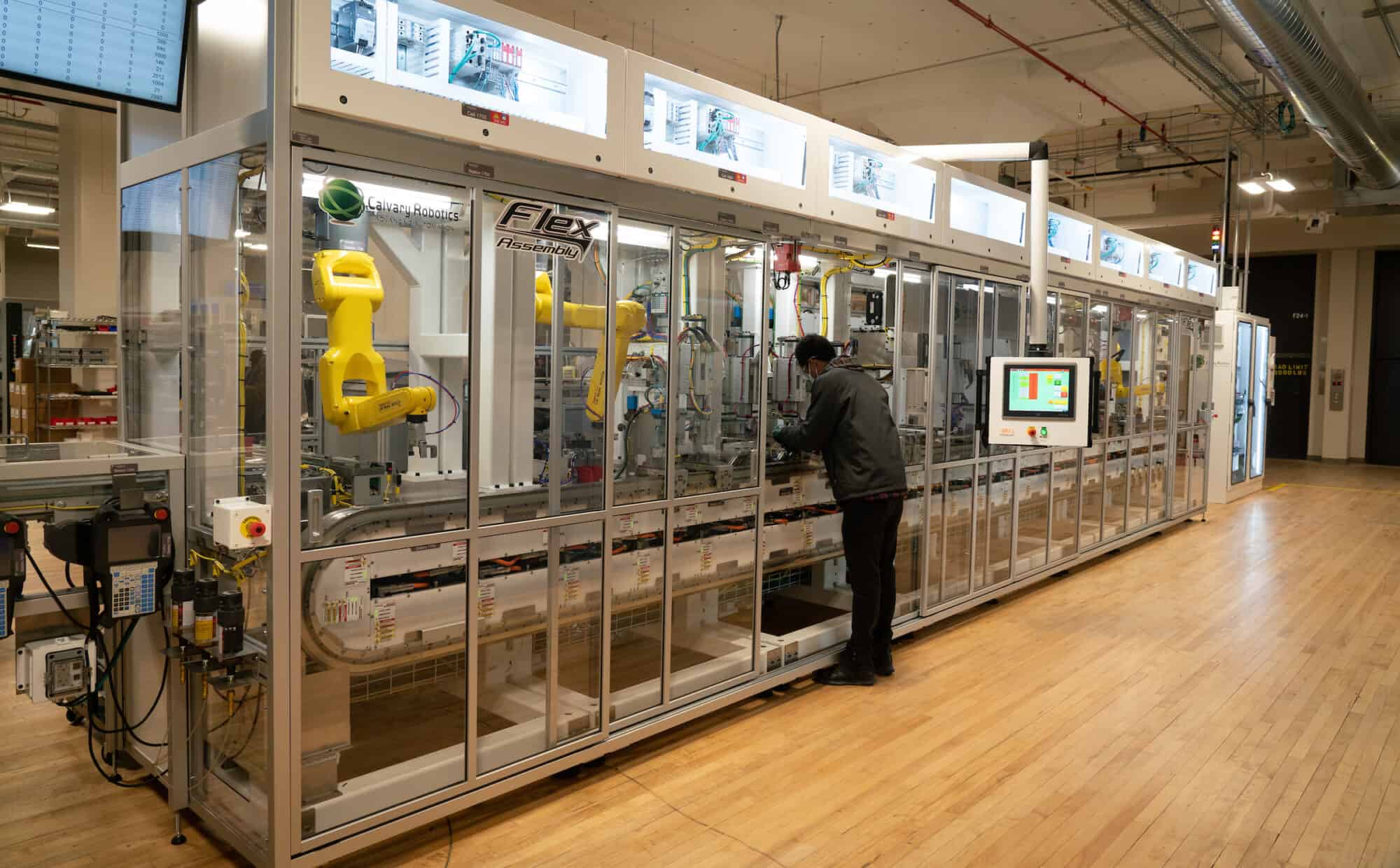
In late 2021, the Manufacturing Leadership Council launched the Manufacturing in 2030 Project, a comprehensive examination of the factors that will influence the industry leading up to the year 2030 and beyond. The latest milestone in this sweeping project is the release of The Next Phase of Digital Evolution.
This groundbreaking white paper examines the global megatrends like population, the economy, sustainability demands, and technology development – all of which will impact business decisions and are essential for manufacturing competitiveness.
Data’s Growing Role: Data is perhaps manufacturing’s most important asset, tracking everything from individual machine performance to the status of global supply chains. Developments in digital systems for factories, high-powered industrial networks and advanced communication technologies are giving rise to the ability to collect data.
Combined with a rise in analytics capabilities, manufacturers are now able to apply that data in powerful ways to improve processes, speed innovation, find new business opportunities and ultimately create conditions for greater competitiveness.
A Rising Middle Class: Population trends will influence where manufacturers build new factories, who they hire, the products that they make, organization for supply chains and who they are selling to.
Africa and Asia are projected to have the strongest population growth, and while traditional middle-class markets in the U.S., Europe and Japan are expected to grow at only modest rates, 88% of the next billion entrants into the middle class will be from Africa.
What’s to Come: Manufacturers will also need to consider their role in creating sustainable business practices and how they will overcome persistent workforce challenges. Institutional investors are pressuring businesses to significantly improve environmental practices, while the already yawning gap in skilled workers is expected to skyrocket to 2.1 million unfilled openings by 2030.
Technology could have a role in solving both of those issues. On the sustainability front, data can be key to monitoring emissions, utility consumption and waste, while also giving rise to new processes that improve on those metrics. For the workforce, data can empower workers to make more informed decisions, automation can eliminate repetitive tasks, and technologies like augmented and virtual reality can enhance training and upskilling.
To learn more about these and other insights, download the full white paper here.
Lincoln Electric Tour Showcases Innovation
Get the Latest News
Get involved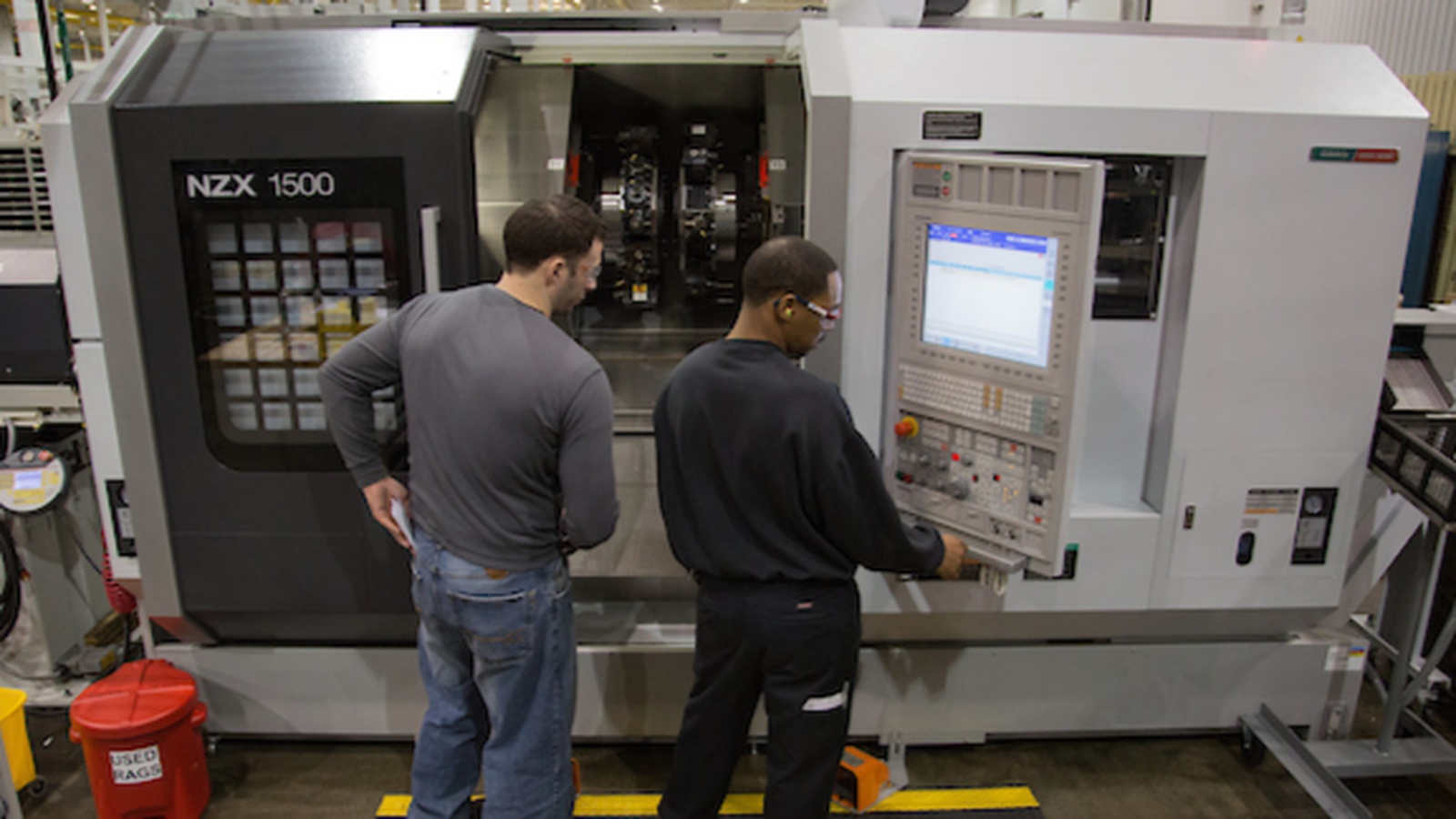
A word of caution about the Manufacturing Leadership Council’s plant tours: Attending one could make you rethink your manufacturing operations.
Inspiration abounds: The MLC, the digital transformation arm of the NAM, recently hosted a plant tour of Lincoln Electric’s headquarters in Cleveland. Inspired by the innovation on display, one attendee vowed “to go back to my own company and start asking what’s stopping us from implementing similar technologies and practices.”
- The two-day Lincoln Electric event included visits to the company’s welding and training center, its machine division, its 3D printing facility and its automation-solutions center.
- Tour participants also learned how the business is overcoming workforce shortages through culture and technology solutions.
What is Lincoln Electric? Lincoln Electric was founded in 1895 as an electric-motors manufacturer. Today it is a global industry leader in welding equipment and consumables, additive manufacturing and automation solutions. The company has locations in 19 countries and serves customers in more than 160.
Welding school: The first stop on the tour was Lincoln Electric’s world-class welding school, first opened in 1917 and relaunched in 2018 as the 130,000-square-foot Welding Technology & Training Center.
- Students at this state-of-the-art facility begin their training at virtual welding stations before moving to one of 150 training booths to use the real “arc.”
- Lincoln Electric also offers virtual classes, a turnkey curriculum for customers and “train the trainer” courses for welding instructors.
3D printing: Tour participants also got a look at the company’s Additive Solutions Center, the largest platform of its kind, which boasts 18 3D printing cells. It serves customers in the automotive, aerospace, marine and energy industries.
- The equipment prints replacement parts, molds, tooling and prototypes measuring up to eight feet long and weighing more than 8,000 pounds.
- It can print in a variety of metals, including mild steel, stainless steel, nickel alloys, bronze and Inconel.
Automation solutions: The Automation Solutions Center tour stop demonstrated Lincoln Electric’s twin answers to the manufacturing skills gap: innovation and tech solutions that increase productivity.
- The technology on offer includes automated arc welding products, collaborative robots, metal fabrication and assembly line solutions.
- Demand for Lincoln Electric’s collaborative robots is up as manufacturers cope with workforce shortages, tour participants learned.
High-performance culture: Tour attendees also learned about Lincoln Electric’s high-performance culture, which rewards success and provides employees with opportunities for growth and development.
- The company’s Incentive Management System for the production workforce includes output-based pay to maximize personal earnings potential, an annual profit-sharing bonus, a no-layoffs policy and an open-door policy.
- “I found the networking time to be highly valuable and came away with several ideas on employee retention,” said a tour participant.
Future focus: Looking ahead, Lincoln Electric leadership said the company’s core focus must and will be on its people—to continue to build a pipeline of talent and attract and develop the next generation of leaders.
Manufacturers Are Getting Tough on Cybersecurity
Get the Latest News
Get involved
More companies are taking a disciplined approach to the growing threat of cyber attacks, according to a new cybersecurity survey from the Manufacturing Leadership Council. The MLC is the digital transformation arm of the NAM.
- The survey, which included input from 160 companies, indicates a dramatic change in how seriously manufacturers consider cyber threats compared to 2018, when the MLC last conducted the same survey.
Who’s prepared: Nearly 62% of manufacturing companies say they have a formal cybersecurity plan in place, according to the survey.
- That’s up from 2018, when barely 33% of manufacturers indicated they had devised and adopted formal cybersecurity plans that encompassed their plant floors.
- Nearly 40% of respondents said they had a high level of confidence in their internal cyber expertise, compared with just 25% who expressed such certainty in 2018.
More attacks expected: Yet even as better cybersecurity strategies are put in place, nearly 79% of survey respondents said they expect more attacks in the next year.
- That figure is up from 64% in 2018.
- The most frequently cited reasons for this prediction are increased levels of cyber crime and cyber terrorism and greater connectivity in manufacturers’ operations.
The effects on digital transformation: More than half the survey respondents expressed concern that cybersecurity issues could affect the speed and scope of digital transformation.
- 14% said cybersecurity could be a major obstacle in the next five years, with another 40% describing it as “an issue of concern.”
- Close to half—43%—said they consider cyber a part of doing business in a digitally transformed world.
Proactive measures: More manufacturers are taking advantage of publicly available safeguards, such as the NIST Cybersecurity Framework, to underpin their strategies.
- Nearly 58% of respondents said they have adopted the NIST framework, up from 48% in 2018.
- 45% said they have cyber insurance, compared to the 18% that said they had it in 2018.
The coming challenge: In the past four years, manufacturers have made significant strides to combat the growing problem of cyber attacks against the industry.
- However, manufacturers will need to stay a step ahead of cyber criminals as the number and sophistication of attacks increases.
See the survey: Review the survey findings for an in-depth look at how manufacturing leaders are thinking about cybersecurity in manufacturing’s digital era.
Get help: NAM Cyber Cover was designed specifically to provide enhanced risk mitigation and protection for manufacturers and their supply chains. Find out more at www.namcybercover.com.
A Summer Reading List for Innovative Manufacturers

Heading to the beach? Take along the Manufacturing Leadership Council’s summer reading list to catch up on today’s top trends in digital manufacturing while you catch some rays. With these articles, you’ll discover new ideas, technologies and best practices to give your company a competitive edge.
Workforce: Leading the Way to Workforce Optimization. As digitization changes employees’ expectations of their employers, manufacturers must adapt. Examples include options for remote work, interactive training, agile and rapid collaboration platforms, career development, work-life balance and more.
Industrial automation: Camozzi’s Autonomous Vision. Successful autonomous manufacturing will depend on the fundamental relationship between humans and machines, says Camozzi Group CEO Lodovico Camozzi, whose company makes industrial machinery. In a recent interview with the MLC, Camozzi shared his view of manufacturing’s autonomous future, including:
- How advanced additive manufacturing approaches promise new production paradigms;
- The importance of collaboration in driving innovation and excellence; and,
- Why the industry must maintain a human focus in today’s digital world.
Cybersecurity: Ransomware Attacks Increasingly Targeting Manufacturers. Think your business is safe from hackers? Think again. Ransomware attacks against manufacturers are on the rise. All businesses should be on guard against cyber extortion, advises Peter Vescuso, vice president of marketing for industrial cybersecurity provider Dragos and a member of the MLC.
Supply chain: How Manufacturers Can Navigate Supply Chain Challenges.
As global supply chain woes, worker shortages and wage inflation challenges intensify, manufacturers everywhere want to know the best way to navigate them. In this article, a panel of industry experts shares top tips to sustainably and profitably overcome current obstacles.
Artificial Intelligence: AI Roadmap: How Manufacturers Can Amplify Intelligence with Artificial Intelligence. Artificial intelligence offers manufacturers a host of benefits, including better visibility into supply chains, insights from predictive analytics and the ability to quickly respond to unexpected changes in demand. A six-step road map can help manufacturers looking to integrate AI into their businesses.
5G: 5G Will Help Unlock M4.0’s Potential. 5G technology offers speed and capacity advantages to manufacturing companies. According to the MLC’s recent Transformative Technologies survey, 26% of manufacturers have already invested in 5G technology. More than half expect to invest or are considering investing in the technology over the next two years to take advantage of 5G’s benefits.
Sustainability: Overcoming Roadblocks to Advance Sustainability Programs.
The manufacturing industry is expected to improve its sustainability and keep leading the fight against climate change. However, making green changes to processes and procedures can be costly. To get the most bang out of their sustainability investments, manufacturers should focus on data-driven initiatives and indicators.
Looking for more digital manufacturing insights? Browse the Manufacturing Leadership Journal for additional information on technology, organizational structure and leadership in manufacturing’s digital era.
What Manufacturing Leaders Learned at Rethink 2022
Get the Latest News
Get involved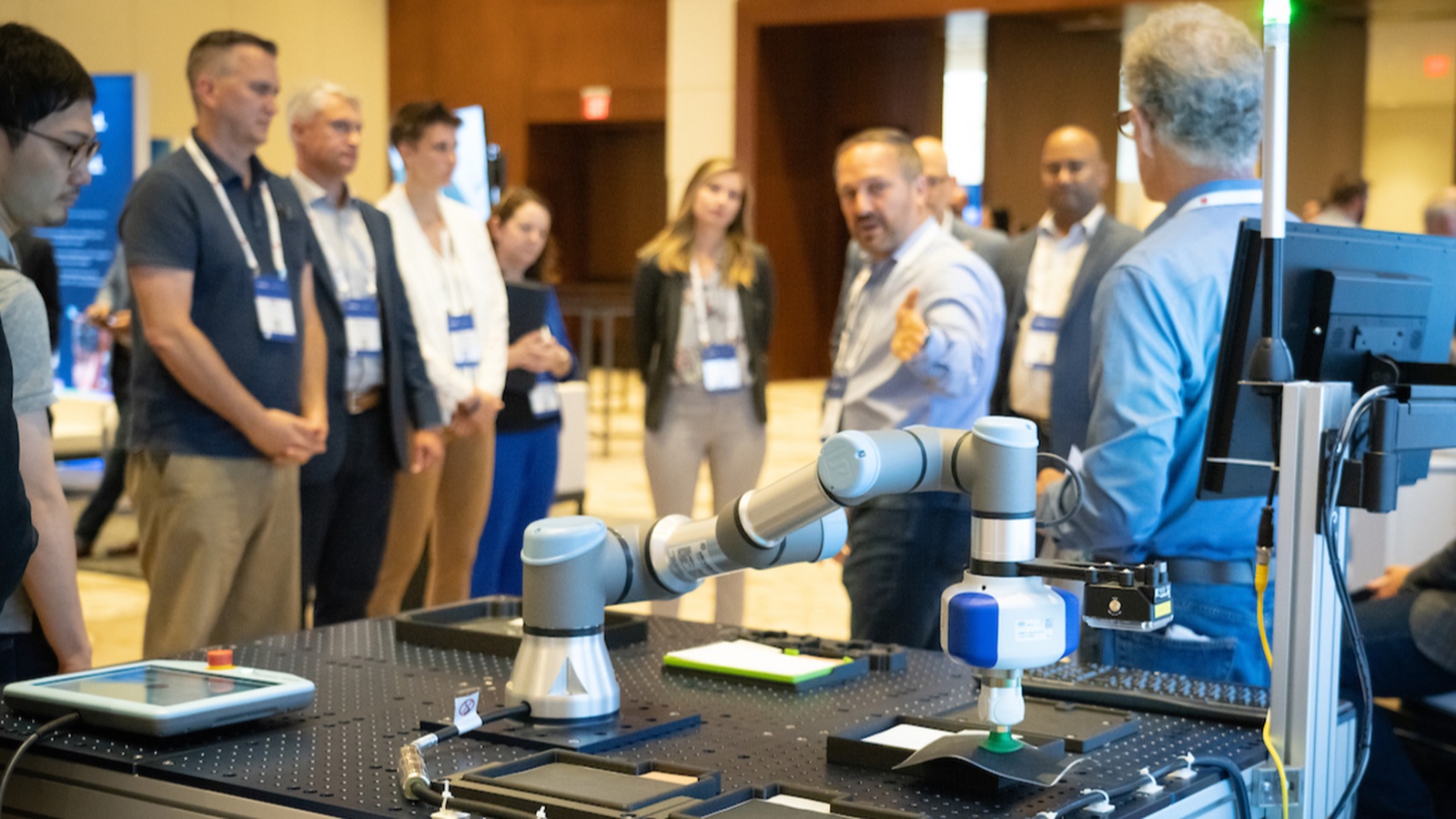
Manufacturers flocked to Florida this summer to discuss the cultures, skills and technologies necessary for digital transformation at the 2022 Rethink Summit, the signature event of the NAM’s Manufacturing Leadership Council. The MLC is the world’s first member-driven, global business leadership network dedicated to senior executives in the manufacturing industry.
The big event: The first in-person Rethink since 2019, this year’s summit drew the largest crowd since the annual event began 18 years ago.
- The conference in Marco Island, Florida, hosted some of the most innovative leaders and teams in the industry, from companies such as Pfizer, Intel, Dow, Saint-Gobain and many more.
- Participants learned about real-world advances and shared best practices in supply chain resilience, effective business cultures, machine learning, business ecosystems and more—as explained by industry experts who put these innovations into practice themselves.
The panels: Here is a quick sample from the array of manufacturing expertise on offer.
- A Pfizer case study: Pfizer Vice President of Digital Manufacturing Mike Tomasco explained how Pfizer Global Supply transformed itself from a digitally siloed operation to a world-class digital powerhouse.
- Bridging the digital divide: A panel of leaders—including Graphicast President Val Zanchuk, BTE Technologies President and NAM SMM Board Chair Chuck Wetherington and Intel Senior Director of Industrial Innovation Irene Petrick—discussed how small and medium-sized manufacturers can keep up with the digital transformation occurring throughout the industry.
- Reaching the next generation: A panel of young manufacturing leaders from Dow, Cooley Group and Saint-Gobain North America discussed what young people are looking for in manufacturing jobs, including interdisciplinary teams and lots of communications up and down the organization levels.
A week of manufacturing: The Rethink Summit was only one highlight of a week of manufacturing events put on by the MLC. The roster of events also included the MLC’s Council Day and the ML Awards Gala.
- Council Day offers MLC members the opportunity to chart the agenda for the MLC’s next year, thus influencing how the whole industry thinks about and plans for digital innovation.
- The Awards Gala spotlights companies and individuals doing incredible work to advance M4.0. The black-tie event honored leaders and companies in 11 project categories, plus the Manufacturers of the Year and Manufacturing Leader of the Year.
- This year, the MLC named Pfizer CEO Dr. Albert Bourla the Manufacturing Leader of the Year, for Pfizer’s extraordinary and ongoing contributions in fighting the COVID-19 pandemic.
The last word: “[T]he fundamental shift in our economy to doing business digitally in all industries, including manufacturing, not only continues but is gaining greater speed and urgency,” said MLC Co-Founder David R. Brousell during an address at Rethink.
Join us next year: Keep up to date with the MLC by visiting the website and stay tuned for Rethink 2023!
Manufacturing Leadership Council Recognizes Pfizer CEO
Get the Latest News
Get involved
The Manufacturing Leadership Council—a division of the NAM that helps manufacturers leverage digital transformation—named Pfizer CEO Dr. Albert Bourla the 2022 Manufacturing Leader of the Year at the 18th annual Manufacturing Leadership Awards Gala.
The details: The ML Awards are the U.S. manufacturing industry’s biggest stage for recognizing excellence in digital manufacturing. Since the program’s founding in 2005, more than 1,000 high-performing projects and individual leaders have been honored with an award. Winners represent companies of varying sizes in a wide array of industries.
The big award: The Manufacturing Leader of the Year award was presented to Bourla for Pfizer’s extraordinary and ongoing contributions in fighting the COVID-19 pandemic.
- “Manufacturing in America today is stronger thanks to the leadership of Dr. Bourla and his team at Pfizer, including our Executive Committee member Mike McDermott,” said NAM President and CEO Jay Timmons. “Albert and Mike’s passion and dedication to defeating COVID-19 set an example for thousands of companies as our industry navigated and responded to the evolving pandemic, and their leadership and innovation will make us better prepared to respond to the next crisis.”
Other honorees: Awards were given to companies that excelled in various categories of manufacturing, including Protolabs for collaborative ecosystems, AB InBev for digital network connectivity and operational excellence, Dow for digital supply chains, General Motors for engineering and production technology, Flex and Johnson & Johnson for enterprise integration technology, AUO Corporation for sustainability and ALOM Technologies for transformative cultures.
Manufacturers of the Year: Protolabs was named the Small/Medium Enterprise Manufacturer of the Year, and AB InBev was named the Large Enterprise Manufacturer of the Year.
The last word: “Manufacturers continue to be the driving force for global economic recovery and pandemic response as they establish innovative ways to problem-solve in an increasingly complex environment,” said MLC Co-Founder, Vice President and Executive Director David R. Brousell. “Those recognized tonight have helped establish a roadmap for the future of the sector and highlight the importance of Manufacturing 4.0.”



